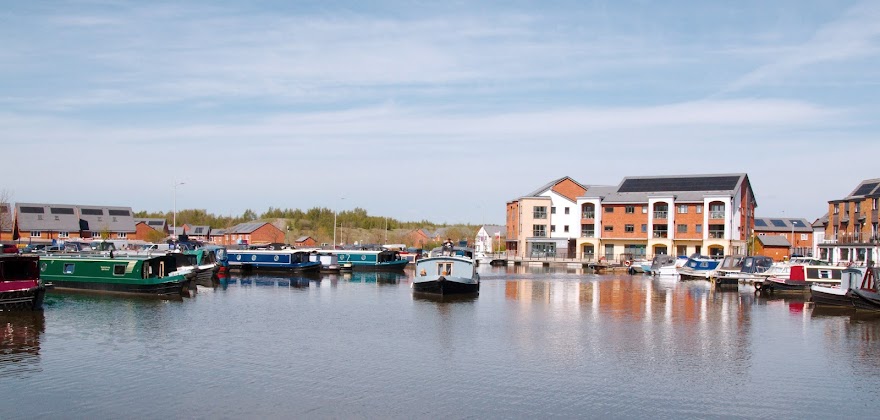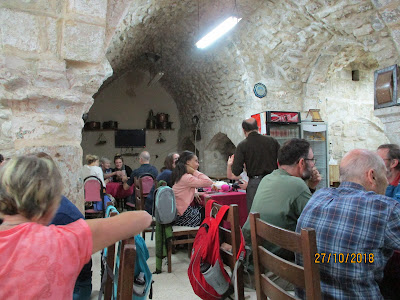The Jaffa Gate which was built by Suleiman in 1538. The name in Arabic, Bab el-Halil or Hebron Gate, means "The Beloved" and refers to Abraham, the beloved of God who is buried in Hebron.
Acts 1:9-12 When he had said this, as they were watching, he was lifted up, and a cloud took him out of their sight. While he was going and they were gazing up towards heaven, suddenly two men in white robes stood by them. They said, ‘Men of Galilee, why do you stand looking up towards heaven? This Jesus, who has been taken up from you into heaven, will come in the same way as you saw him go into heaven.’
Zech 14:4-9 4On that day his feet shall stand on the Mount of Olives, which lies before Jerusalem on the east; and the Mount of Olives shall be split in two from east to west by a very wide valley; so that one half of the Mount shall withdraw northward, and the other half southward. 5And you shall flee by the valley of the Lord’s mountain, for the valley between the mountains shall reach to Azal; and you shall flee as you fled from the earthquake in the days of King Uzziah of Judah. Then the Lord my God will come, and all the holy ones with him. 6On that day there shall not be either cold or frost. 7And there shall be continuous day (it is known to the Lord), not day and not night, for at evening time there shall be light.
8On that day living waters shall flow out from Jerusalem, half of them to the eastern sea and half of them to the western sea; it shall continue in summer as in winter. 9And the Lord will become king over all the earth; on that day the Lord will be one and his name one.
The walk itself was interesting, walking down Jaffa St, through Teddy Park. We found it was also wise to wait for the Green Man to cross the roads, traffic came from all directions.
Points of interest included two Christians who lived in the vicinity;
Lance Lambert 1931-2015
Lance Lambert has had an outstanding ministry of huge significance for relationships between Jews and Christians. As a Messianic believer, Lance was in a unique position in Jerusalem where he was accepted as a wise counselor by many in leadership in Israel.
Derek Prince 1915-2003
At the time of Prince's death in September 2003, he was the author of over 50 books, 600 audio and 100 video teachings, many of which have been translated and published in more than 100 languages. Some of the subjects that are covered in his teachings are prayer and fasting, foundations of the Christian faith, spiritual warfare, God's love and marriage and family.
Along the way we stopped and James shared his knowledge of that places we could see. In the distance we could see the Church of Saint Peter in Gallicantu – one for next time I go to Jerusalem.
The church takes its name from the Latin word "Gallicantu", meaning cock's-crow. This is in commemoration of Peter's triple rejection of Jesus "... before the cock crows twice." (Mark 14:30)
The walk led us back into the Old City, the city is divided into 4 quarters;
• Armenian
• Christians
• Muslim
• Jewish
The Jaffa gate took us to the Jewish Quarter.
We made it to the top of the market and out via the Dung Gate, located along the south wall, this gate is closest in proximity to the Temple Mount. The gate received its name because starting in the 2nd Century, refuse was hauled out of the city through this gate. From the top we could see the Mount of Olives and the Kidron Valley. The Kedron Valley runs north-south between the Mount of Olives and the eastern wall of the Temple Mount and the City of David. This valley actually continues all the way to the Dead Sea. The total length of the valley is 20 miles, and it falls 4,000 feet. The Gihon Springs naturally filled this valley, but the settlers of Jerusalem diverted the water into pools and channels to be used by the city. The Bible describes David fleeing across this valley and up the Mount of Olives to escape his son Absalom (2 Samuel 15:13-30). King Asa worshipped here at pagan altars with idols and Asherah poles (1 Kings 15:13). Athaliah was executed here after her evil reign in Judah was brought to a violent end (2 Kings 11:16). Today there are many tombs and graves in the Kidron, since burying people here became a practice in the days of Josiah (2 Kings 23:6). He brought out the image of Asherah from the house of the Lord, outside Jerusalem, to the Wadi Kidron, burned it at the Wadi Kidron, beat it to dust and threw the dust of it upon the graves of the common people. Jeremiah 31:38-40 “The days are coming,” declares the Lord, “when this city will be rebuilt... The whole valley where dead bodies and ashes are thrown, and all the terraces out to the Kidron Valley on the east as far as the corner of the Horse Gate, will be holy to the Lord. The
city will never again be uprooted or demolished.” -
Kedron Valley looking to the Wall at the top left and Bethlehem is up the mountain and round to the right.
Photos of Beth and I and Mandy and Billy – Dome of the Rock in the background















No comments:
Post a Comment